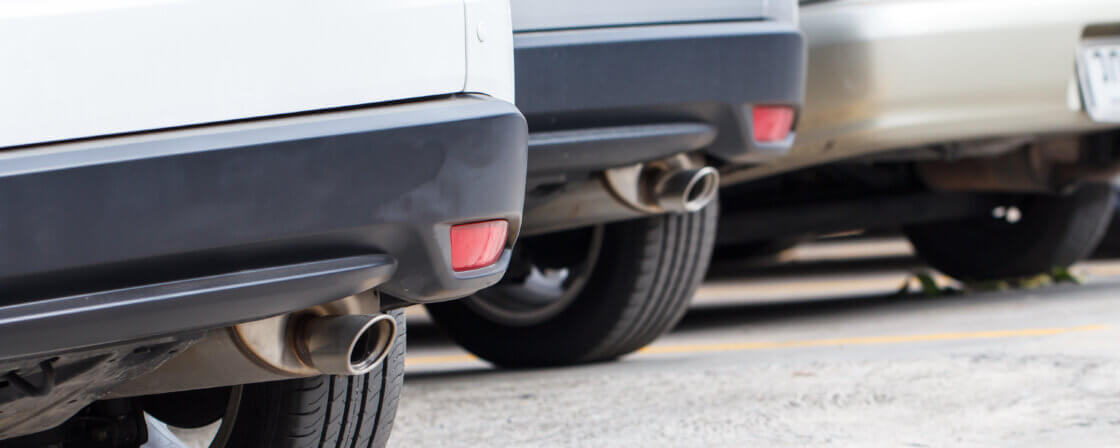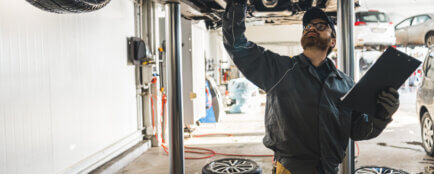Why is emissions measurement so important?
With an emissions test, the government verifies that the tailpipes of cars and commercial vehicles are not releasing more pollutants than the standards allow. At the same time, it’s about protecting your wallet – a vehicle with a good throttle body uses less fuel than one with a clogged injection system. So an emissions test acts as a kind of preventive check-up, revealing hidden faults before they cost you miles and money.
Are you solving a similar problem?
Have you failed an emissions test or technical inspection?
We can help you with claims, fines and administrative proceedings. Quickly and reliably. Book online and get peace of mind on the road.
More information
- When you order, you know what you will get and how much it will cost.
- We handle everything online or in person at one of our 6 offices.
- We handle 8 out of 10 requests within 2 working days.
- We have specialists for every field of law.
Legislative framework and drivers’ obligations
Each emission measurement station operates according to the Act on the Conditions of Operation of Vehicles or its implementing decrees. These regulations are also supplemented by the Air Protection Act. The technicians directly at the stations have to follow a decree which prescribes a detailed test procedure, including calibration of the analysers, control of the communication with the control unit and a report template.
When and how often do you need to have your emissions measured
The validity of the emission measurement is linked to the validity of the technical inspection. Therefore, you will find a common “STK+ME” date on the technical certificate. If your vehicle has had an engine, steering or fuel system replacement, you must have an extra emissions test regardless of the original date.
The obligation for regular technical inspections and emission measurements is also regulated by the Act on the Conditions of Operation of Vehicles on Roads. This clearly states how often you must take your vehicle for an inspection:
- Passenger cars and light commercial vehicles (category M1/N1) – for the first time after 4 years from the first registration, then every 2 years.
- Motorbikes and trailers – usually once every 4 years.
- Taxis, ambulances and vehicles over 3.5 tonnes – must have an MOT every year.
If the MOT finds a serious fault, you have 30 days to get it repaired and re-inspected.
What do the Euro standards mean?
Each car has an emission class based on how much (or little) it pollutes the air. These so-called Euro standards determine how much pollutants a vehicle can emit. You can find them in the tables that accompany the Air Pollution Control Act.
The breakdown is by the year the car was first registered. For example, Euro 4 was in force for petrol cars between about 2006 and 2010. Euro 6, which is still in force today, started in 2015.
And what do these standards actually monitor? Primarily the amount of nitrogen oxides (NOx) – these gases irritate the respiratory tract and contribute to smog. Then there’s particulate matter (PM), which is microscopic dust particles that make their way into the lungs and bloodstream.
The forthcoming Euro 7 standard will apply progressively from 2027 for cars and from 2029 for vans. It will be stricter than ever before – tightening limits for NOx and particulates and for the first time, it will start to monitor emissions that have not been thought of before. For example, tyre and brake abrasion – because these also emit fine dust that ends up in the air. Euro 7 is supposed to be the next step towards cleaner transport.
Drive to the check with the engine fully warmed up – you will reduce the risk of increased HC and CO emissions.
What is actually measured in the emissions test?
Each emission measurement station (SME) follows the uniform protocol of the Vehicle Inspection Ordinance, so the result should be the same across the country.
The technician will first check the VIN, fuel and engine capacity. This is followed by a check of the diagnostic socket (OBD) and its connection to the SME measuring unit. If the vehicle’s emissions profile is working in the database, the procedure is faster.
During the emissions check, technicians find out how much your car is polluting the air. Each engine type has slightly different rules and a different way of measuring:
- Gasoline engines – The car is connected to an exhaust meter. The test is done at idle and at an increased idle (when you press the accelerator lightly). The main gases monitored are CO (carbon monoxide) – a poisonous gas produced by imperfect combustion, HC (hydrocarbons) – residual unburned fuel, and lambda – an indicator of whether the engine is mixing air and fuel correctly. The ideal ratio is between 0.97 and 1.03, otherwise the engine burns either too rich or too lean.
- Diesel engines – With a diesel, it is not the specific gases that are measured, but the smokiness, i.e. how much the exhaust “blackens”. How much the gas obscures the light (called opacity) is assessed. The value must be below 1.5 m-¹ for older cars and below 0.7 m-¹ for newer Euro 6 cars.
- LPG or CNG (gas) cars – In addition to the classic emissions measurement as for petrol, the gas installation is checked for gas leaks.
The law determines how high values are still OK. For example, newer cars with electronic engine management (from Euro 3 upwards) must not have CO higher than 0.3%. Older cars with carburettors can have up to 3.5%. If the values are higher, the car fails and has to be repaired.
The SME software then compares the measured values with the limits in the Ministry of Transport’s database and prints an emission measurement report. The driver receives one copy and the technician stores the other for archiving.
Why do cars most often fail emissions tests?
One of the most common causes of failure is a clogged air filter. When it’s clogged, the engine doesn’t get enough air, which impairs combustion and increases emissions. The solution? Replace it at least once a year, it’s not expensive and your engine will thank you.
Another problem is when the familiar orange “check engine” light on the dashboard comes on . This means the engine control unit (ECU) is reporting an error. In this case, it’s not even worth going straight to the emissions test. First you need to do a diagnostic, find out what’s wrong, and then go for a measurement.
And thirdly – cars often fail because of a leaky exhaust. If the exhaust is blowing somewhere, it will distort the measurement results. So it’s a good idea to have the exhaust checked and possibly repaired or welded before the MOT to make sure everything fits as it should.
Tip for article
Tip: Do you know when it pays to write off your car? You can write off not only the purchase price of the car, but also the associated costs and wear and tear.
What is the cost of measuring emissions?
Unlike the technical inspection,the price of emission measurement is freely determined by the stations. According to the SME survey in Prague and Brno (May 2025), you will pay:
| Fuel | Price range |
|---|
| Petrol | 900-1 200 CZK |
| Diesel | 1 200-1 500 CZK |
| LPG/CNG | 1 100-1 400 CZK |
The amount reflects the region (higher rent = higher price), the technology (modern opacimetre) and whether you pass the emissions test together with the STK – the package usually saves 150-300 CZK.
In the smaller towns of the Karlovy Vary or Zlín regions you can get a measurement for CZK 800, while in the centre of Prague you can pay up to CZK 1,600.
Many stations offer online ordering with a 5% discount or the special price “STK and emissions together for CZK 2,200” for cars up to 3.5 tonnes.
Frequently asked questions (FAQ)
How long does it take to measure emissions? The measurement itself takes about 15 minutes, with administration about 30 minutes.
Will the authority notify me of the expiry date? No, you have to keep an eye on the deadline yourself – you can be fined up to 10,000 CZK and have your number plate removed.
What if I don’t pass? The technician will print out a list of defects; you have 30 days to repair and remeasure at a reduced price.
Are the results valid throughout the EU? Yes, the emission measurement report is recognised in EU member states.
Summary
Emissions measurement is a mandatory part of the MOT and checks whether your car meets the emission limits according to the applicable standards. The rules are set out in the Air Protection Act and the Vehicle Conditions Act – passenger cars must have their emissions tested for the first time four years after first registration, then every two years thereafter. The test monitors pollutants such as nitrogen oxides (NOx), particulate matter (PM), carbon monoxide (CO) and hydrocarbons (HC). Most often, cars fail emissions tests because of a clogged air filter, a faulty control unit (the “check engine” light comes on) or a leaky exhaust. It is therefore worth having the car thoroughly checked before the check and driving with the engine fully warmed up. The price of the measurement varies between 900 and 1 500 CZK depending on the fuel and location. If you don’t pass, you have 30 days to have it repaired and rechecked at a reduced price. A properly maintained car not only passes more easily, but also pollutes less and uses less fuel.




